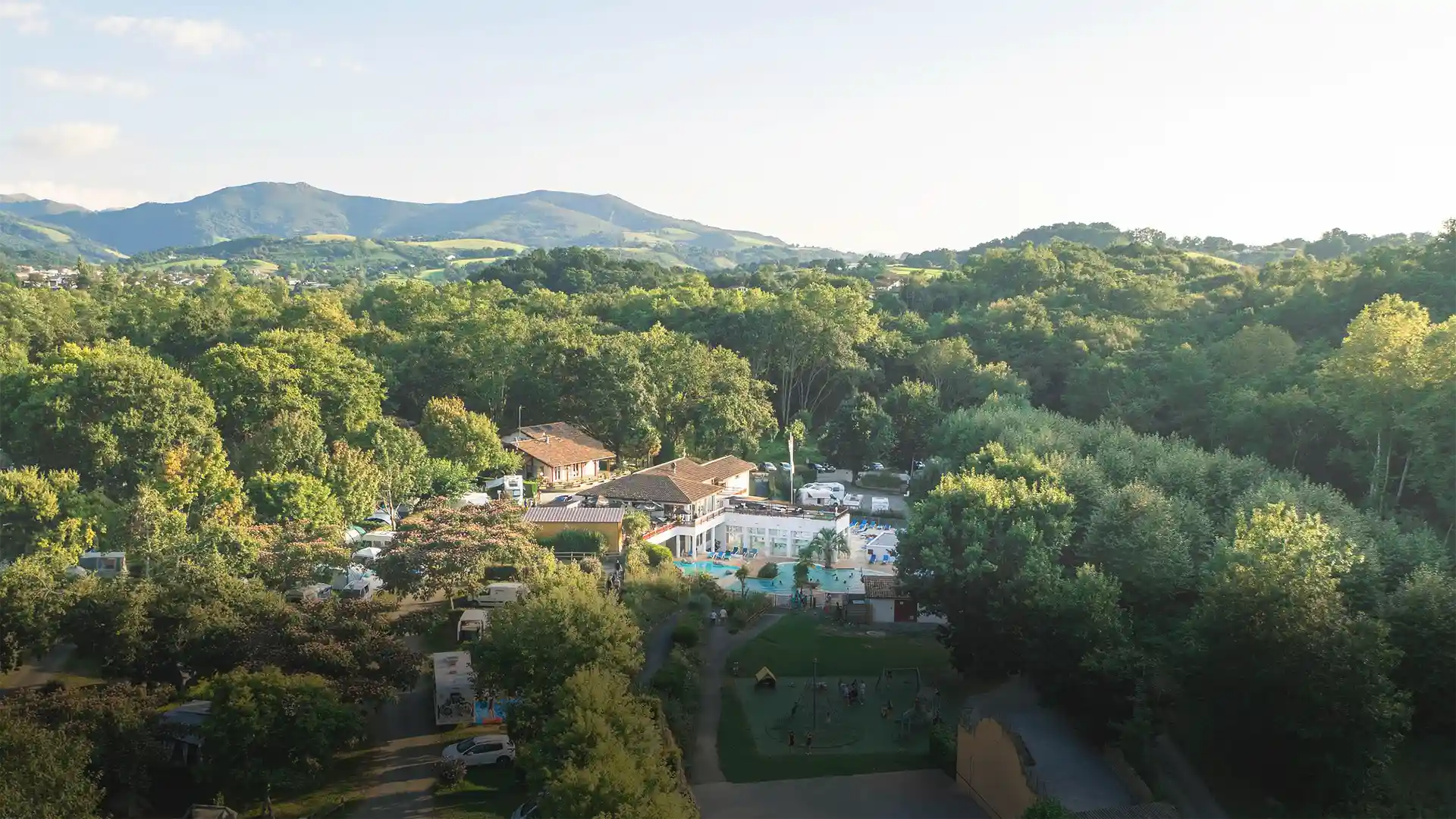What to see and do on vacation in Sare: our must-see places
“Saran Astia” is an old Basque proverb, meaning “In Sare, we have time”. Known for its prehistoric caves, century-old cog railway and free-roaming pottoks, this typical Labourd village offers visitors a timeless getaway just a few kilometers from the Spanish border. What to see, do and visit in Sare? Follow the guide!

One of the prettiest villages in the Basque Country
Around 15 km from Saint-Jean-de-Luz, nestled at the foot of the legendary Rhune andAxuria mountains, Sare (Sara in Basque) is a charming village of 2,600 inhabitants, classified as one of the “most beautiful villages in France”. In a landscape of wooded hills and valleys, watered by countless clear streams, the Basque village is home to four neighborhoods: the largest is Lehenbiscay, with its graceful old white houses, canal tile roofs and Basque red shutters. The area offers magnificent views of the mountains and the village. Note the noble Labourdine houses: Ibaria (16th century), Haranburua (17th century) with two turrets and a chapel dating from 1727, and the houses with “lorios” (porches).
In the heart of the village, the 12th-centurychurch of Saint-Martin is one of the most beautiful in the Labourd region. It was enlarged in the 17th century. The bell tower bears the Basque inscription: “All hours hurt, the last one kills”. Delightful, isn’t it? The commune also boasts eleven chapels or oratories, testimony to the Marian devotion of former sailors. Sare is the Basque village with the most religious buildings.
At the end of the central square, the “plaza” for the SaratarsIn front of the arched houses stands the old pediment, with its stone steps on one side, and on the other, the town hall, whose facade bears an inscription with the arms granted by the French government. Louis XIV to the town, in recognition of the loyalty of the inhabitants in a local battle against the Navarrese.
La Rhune from Sare
Mount Larroun (“Larre Ona” in Basque: good pastures), better known as La Rhune, is the most famous mountain in the Basque maritime region. It is easily reached by a small cogwheel train from the Col de Saint-Ignace on the road between Ascain to Sare. From this frontier summit, at an altitude of 900 metres, you can enjoy an exceptional panoramic view of the Landes forest and Labourd plain to the northeast , the Basque coast and ocean to the west, and the Spanish and French Pyrenees to the south and east.
DID YOU KNOW? Sare ‘s main activities are livestock farming and tourism. There are also a few quarries of pink limestone used for tiles under the name of “dalles de la Rhune”.
The caves of Sare
You can’t leave Sare without visiting the prehistoric caves of Lezea, one of the most popular sites in the Basque Country. In the heart of the Rhune massif, the Sare cave and its 45,000 years of prehistory are told through a sound and light show. The site also houses a megalithic park devoted to ancestral monuments and burial rites, as well as a museum open to the public.
The Basque Cake Museum
Introduced in the 17th century, the recipe for Basque cake remained a secret for a long time before being revealed. Today, the museum dedicated to this regional cake in Sare allows visitors to get their hands dirty and discover some of its secrets.
Our hiking ideas near Sare
On the Spanish border with Navarre, the village of Sare bordersSpain for almost 30 kilometers. Excursions into Spanish territory are easy and numerous. The Blue Pottok (Basque for “little blue horse”) hiking trail links four municipalities, including Ainhoa and Urdax on the Spanish side of Navarre. The GR 8® stage from Sare to Cambo-les-Bains crosses the Labourd hills, offering fine views of the mountains and Basque coast.
photo@F.Perrot/Tourisme 64 Béarn Pays basque


